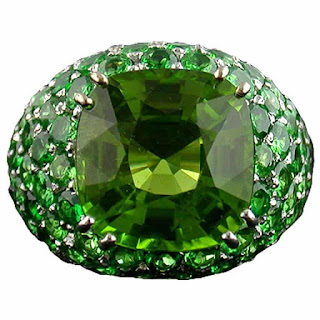Taaffeite stone — a unique gemstone and its properties
History and origin
Taaffeite became known to the world not so long ago, in the middle of the XX century. In the fall of 1945, Edward Charles Taaffe, a gem researcher, made a startling discovery. At that time, the scientist was working on the study and classification of very rare specimens.
During a detailed review of the minerals of the cubic system, he found a sample with obvious differences. Professor of gemology was forced to send the stone to London, in a specialized laboratory for examination of the discovery.
After completing the study, the laboratory confirmed that this mineral was indeed unique in its structure. For in-depth analysis, the specimen was sent to the Mineralogy Department of the British Museum. Since the stone was cut, it required the consent of the Irish Earl that a particle of the gem would be cut.
After conducting microchemical and x-ray diffraction studies, a result was obtained confirming that the indicators of this sample do not coincide with other gems. The main distinguishing feature of the mineral is the double refraction of light rays and the ability to shimmer in several shades. Taaffeite was named after the scientist in 1951.
 |
| engagement ring |
Deposits
Where the first jewelry finds were extracted, history is silent. Since the crystals were cut, it was impossible to determine the Deposit. There is only an assumption that their homeland is Ceylon.
In the bowels of the earth, taaffeite deposits are much less common than the locations of other minerals that are suitable for jewelry work. The most successful finds of the highest quality jewelry recorded in Sri Lanka. There are two known deposits located on the territory of China, in which crystals of extraordinary beauty are found.
Taaffeite deposits
Today, only two taaffeite deposits are reliably known – Sri Lanka and Tanzania. Gem specimens are very rare, but large crystals are often found among them. For example, one of the largest stones weighed 70 carats.
Occasionally, taaffeite samples are found in countries such as China, Madagascar, and Australia.
Application
As mentioned above, taaffeite is used exclusively as a precious stone, and therefore is particularly popular in the jewelry industry.
But the fact is that the world knows only a few copies of the gem, and therefore it is quite difficult, if not impossible, to meet an engagement ring with it on the counter of a jewelry salon. Products with taaffeite for the most part fall directly into private collections and museums, but a variety of accessories can be created with the stone: earrings, engagement rings, wedding rings, pendants, pendants, brooches. Massive jewelry is unlikely to be made with it, for the same reason — taaffeite is not common, and its crystals are rare.
Jewelry with mineral
The use of a gem in jewelry is very rare. It is known that the cost of a stone depends on its purity, beauty of color and size. The price of taaffeite is intermediate between$ 500 and$ 4000 per 1 carat. Such a curiosity is of great importance for a person who collects unique samples, so the crystal is mostly in private possession.
There are single copies of cut crystals offered for sale, in the form of pendants or engagement rings. For example, an oval-cut gem weighing 1.36 carats costs$2,300. Amazing cut "trillion" stone weighing 0.93 carats, estimated at$1,900.
For the frame, the metal is selected of the highest quality, the shade that best matches the color of the stone. Despite the fact that it costs a lot to own taaffeite, there are always those who want to add it to their Treasury.
Judging by the reviews of happy owners of engagement rings with a stone of extraordinary beauty, it is enough just to touch its smooth surface, as you already get an unusual charge of positive emotions. It is not easy to buy it, not every jewelry house can boast a delightful gem in its collection. Most masters use spinel, an analog of taaffeite, which has an external similarity.
 |
| engagement ring |


Комментарии
Отправить комментарий